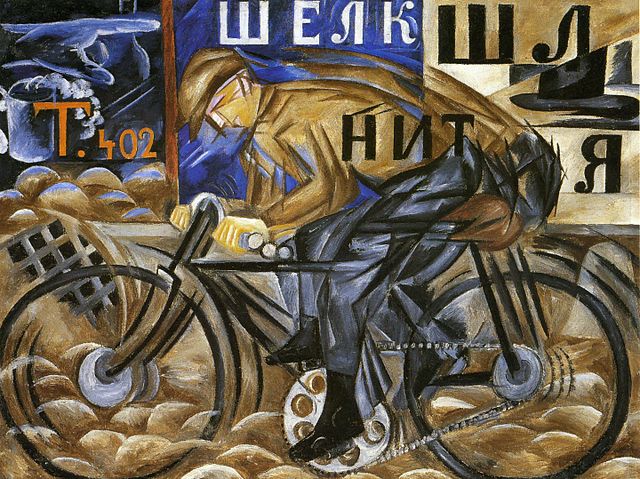Zaum are the linguistic experiments in sound symbolism and language creation of Russian Cubo-Futurist poets such as Velimir Khlebnikov and Aleksei Kruchenykh. Zaum is a non-referential phonetic entity with its own ontology. The language consists of neologisms that mean nothing. Zaum is a language organized through phonetic analogy and rhythm. Zaum literature cannot contain any onomatopoeia or psychopathological states.
Khlebnikov's book Zangezi (1922)
Cubo-Futurism or Kubo-Futurizm was an art movement, developed within Russian Futurism, that arose in early 20th century Russian Empire, defined by its amalgamation of the artistic elements found in Italian Futurism and French Analytical Cubism. Cubo-Futurism was the main school of painting and sculpture practiced by the Russian Futurists.
In 1913, the term "Cubo-Futurism" first came to describe works from members of the poetry group "Hylaeans", as they moved away from poetic Symbolism towards Futurism and zaum, the experimental "visual and sound poetry of Kruchenykh and Khlebninkov". Later in the same year the concept and style of "Cubo-Futurism" became synonymous with the works of artists within Ukrainian and Russian post-revolutionary avant-garde circles as they interrogated non-representational art through the fragmentation and displacement of traditional forms, lines, viewpoints, colours, and textures within their pieces. The impact of Cubo-Futurism was then felt within performance art societies, with Cubo-Futurist painters and poets collaborating on theatre, cinema, and ballet pieces that aimed to break theatre conventions through the use of nonsensical zaum poetry, emphasis on improvisation, and the encouragement of audience participation.

Natalia Goncharova, Cyclist (1913), oil on canvas, 78×105 cm, State Russian Museum
Sergey Schukin by Dm. Melnikov (1915)
Filippo Tommaso Marinetti, author of the Manifesto of Futurism
Composition with Cards (1915) by Olga Rozanova





